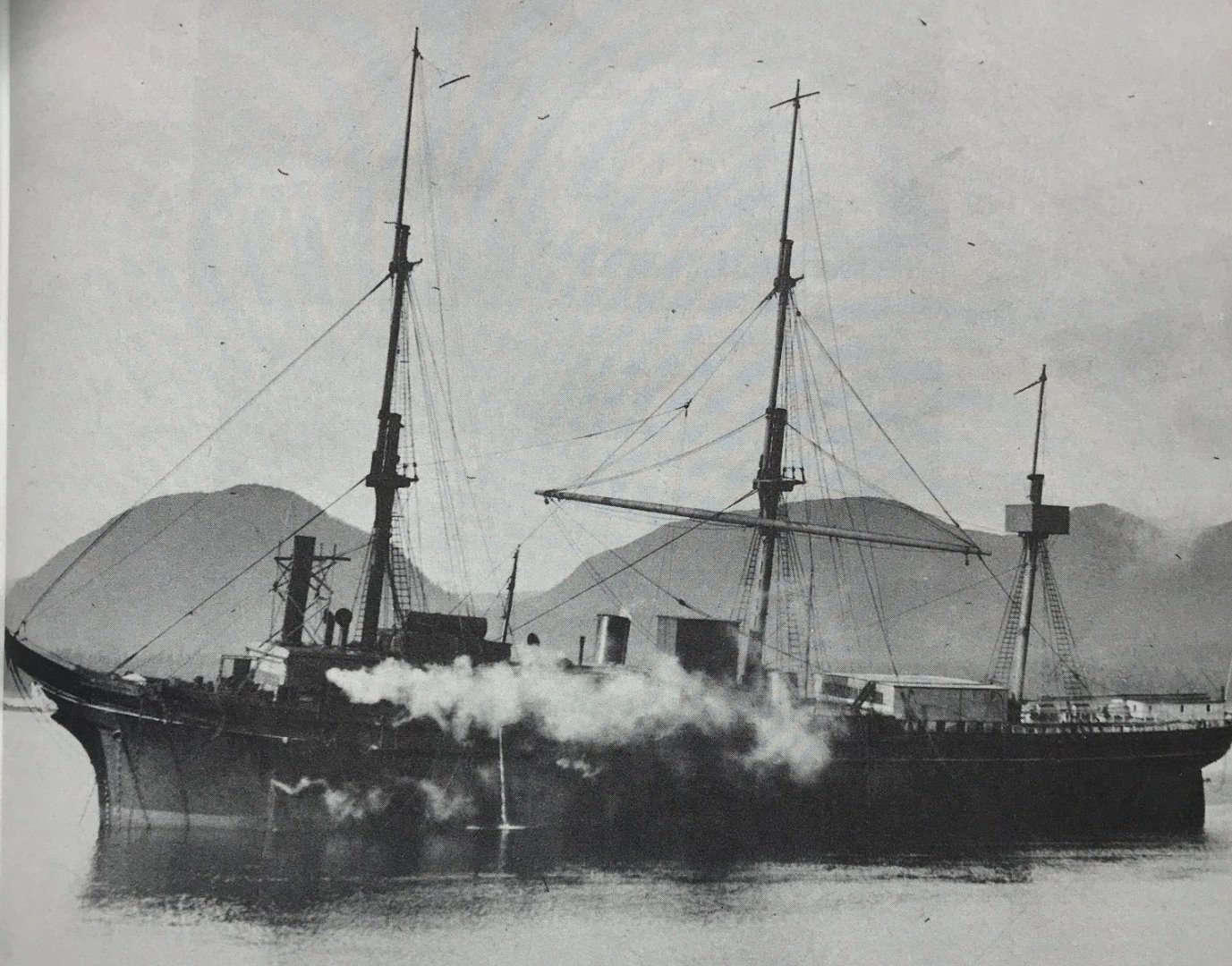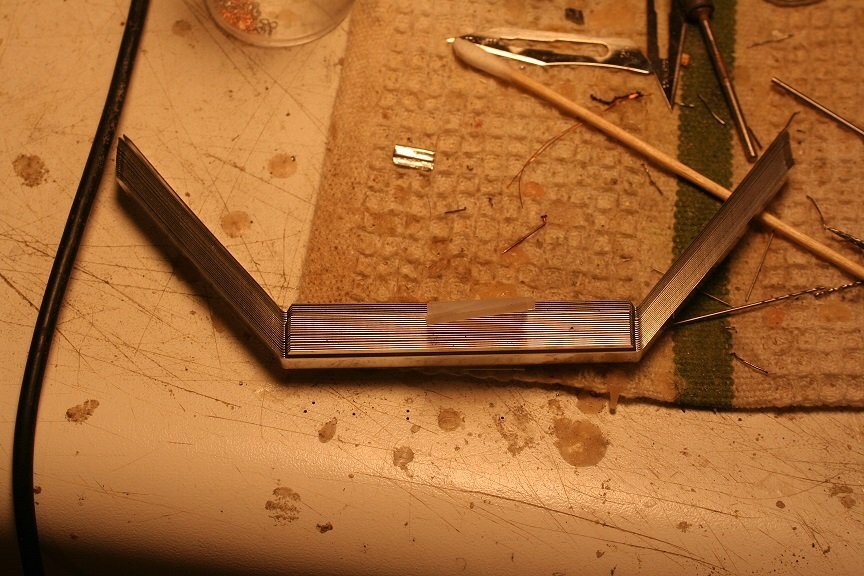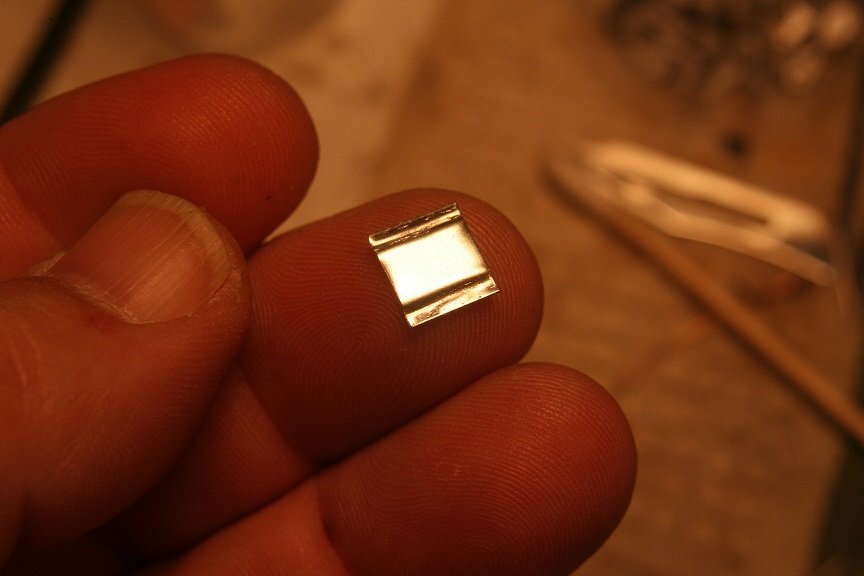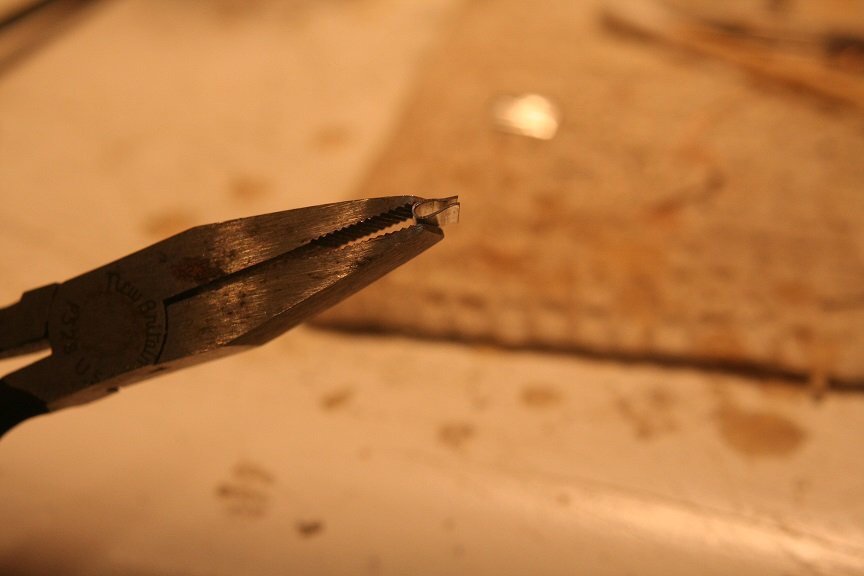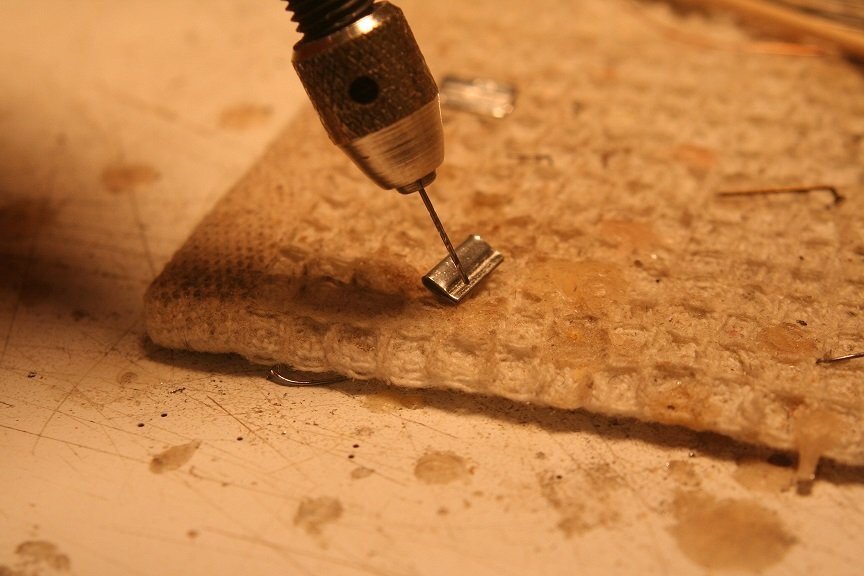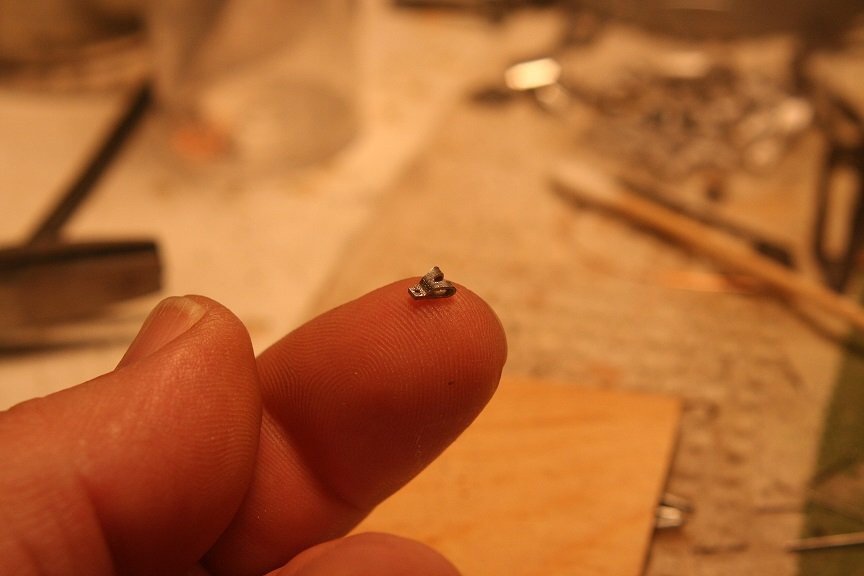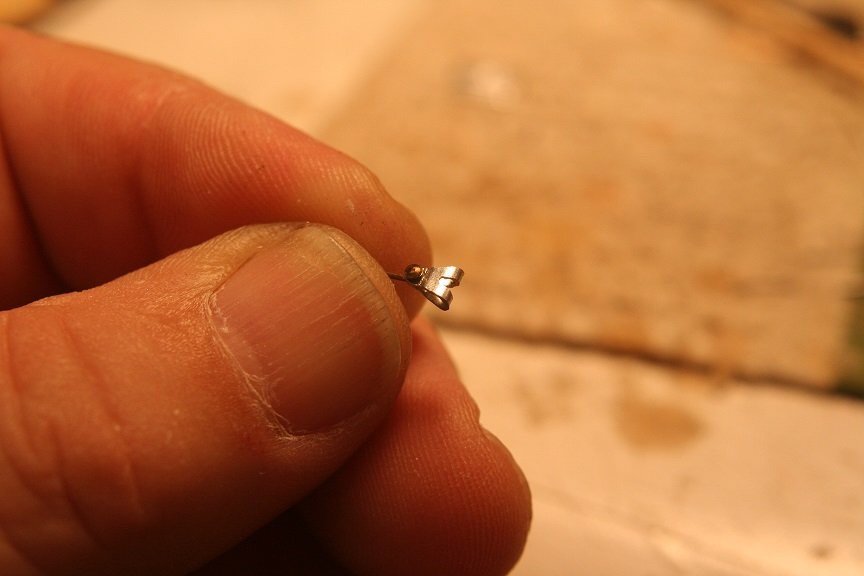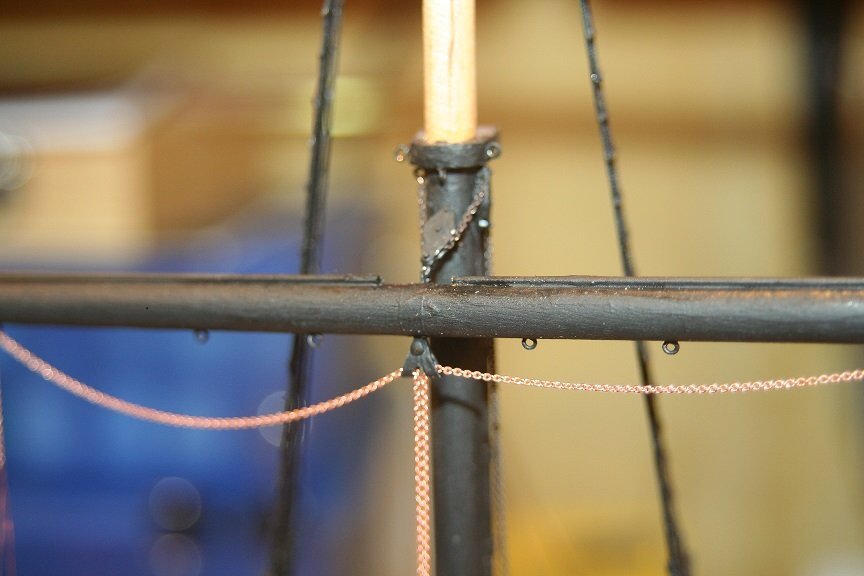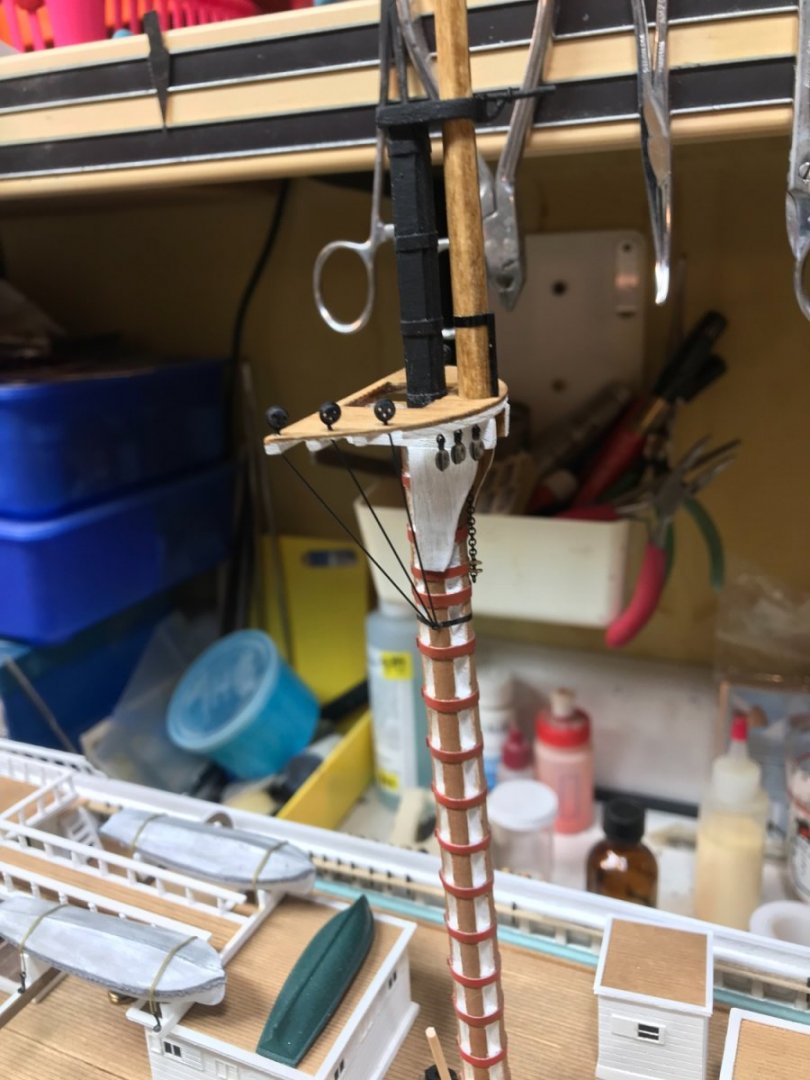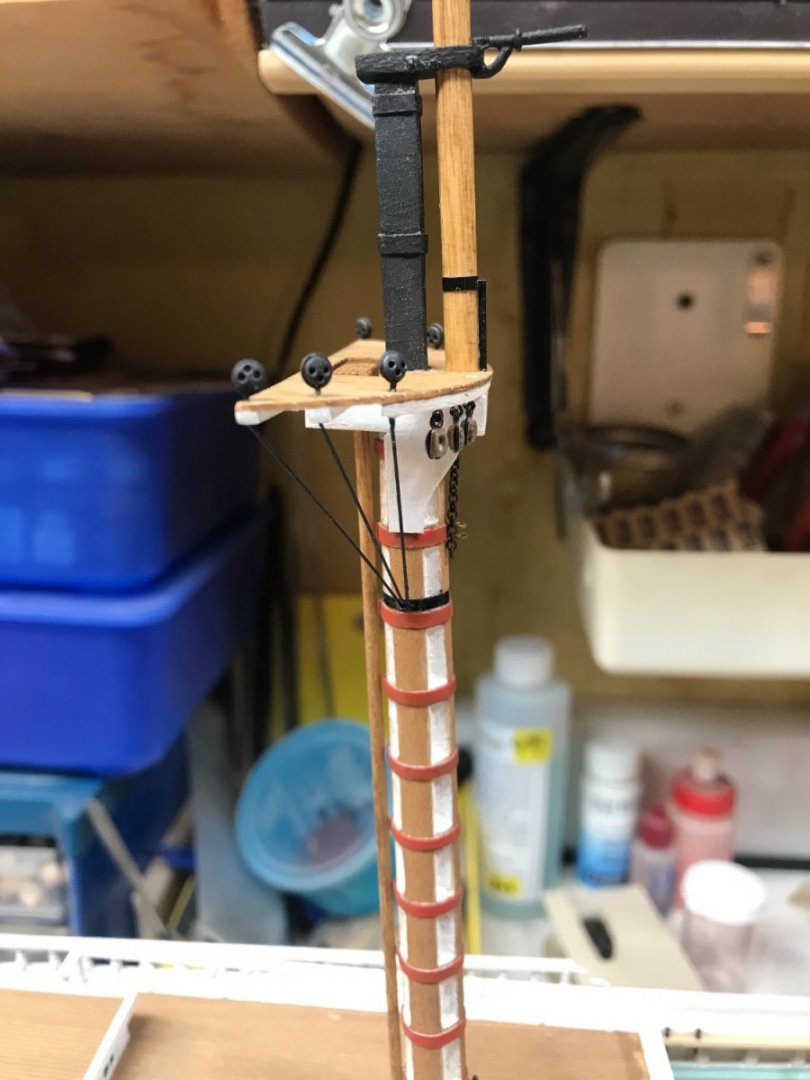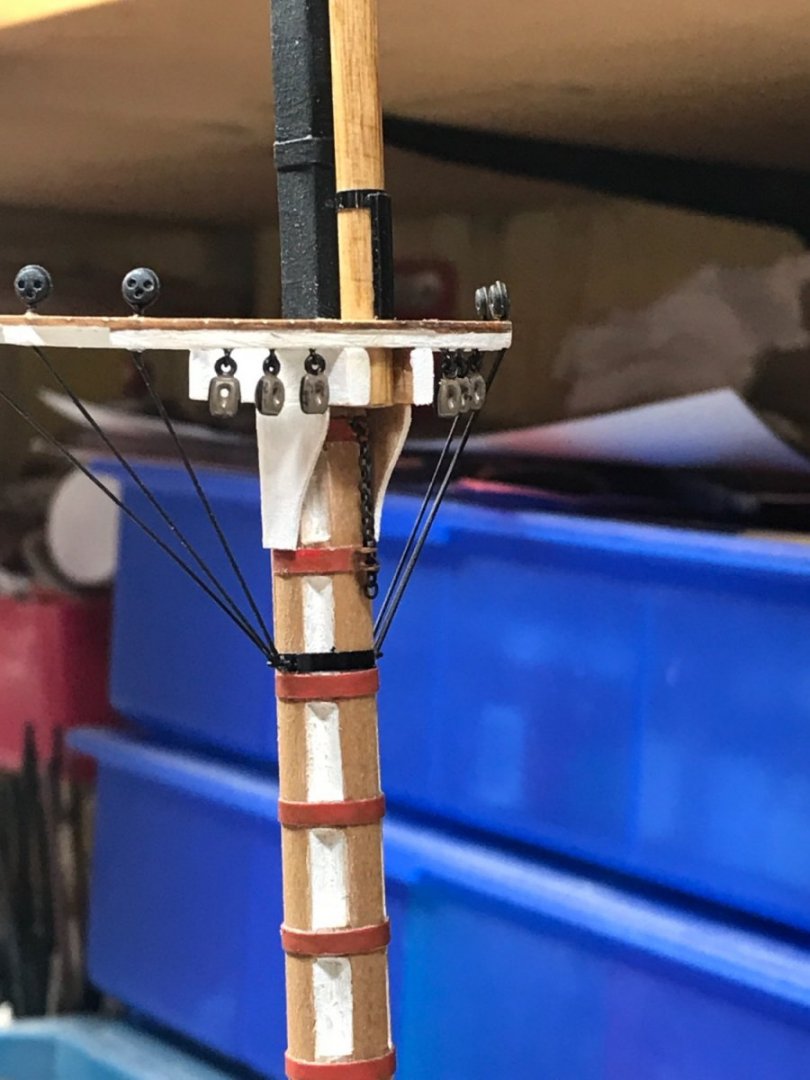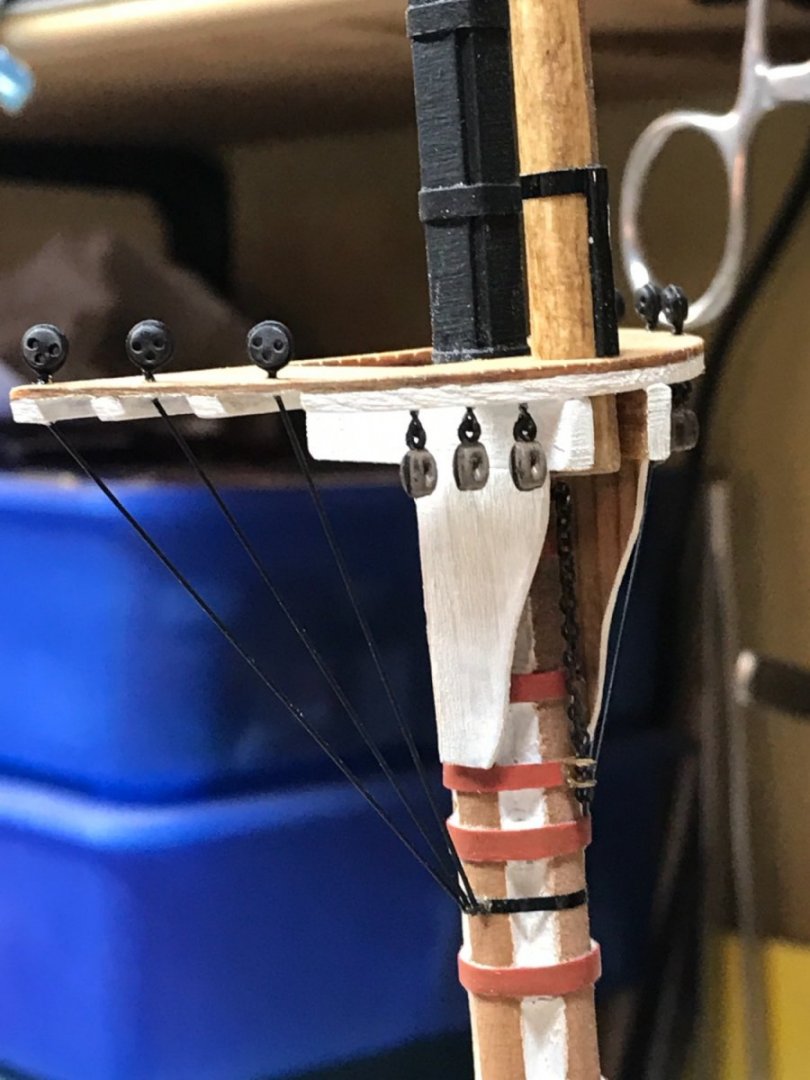-
Posts
5,504 -
Joined
-
Last visited
Content Type
Profiles
Forums
Gallery
Events
Everything posted by rwiederrich
-
I am a firm believer in paint. It covers a multitude of sins and is actually typically accurate. No real vessel ever goes to sea unpainted and unweather protected. If one attempts in their model to be artistic or mechanically structural....a varnished bare wood model can be impressive...showing off structures and building techniques and skillful wood joinery. I prefer to build accurate finished and weathered models...and the freedom of using any material to accomplish that is one of my greatest modeling pleasures. I use any appropriate material and you would not know it on the finished model. Wood, Veneer, plastic, metal, card stock, wax, compounds,....you name it...if it can be painted it will get used. I just wanted to mention that I was impressed with your use of plastic card stock and 1/4 round stock and tube stock to accomplish the goal of creating your houses and some of their furnishings. Knowing that paint is going to grace the material...you have freedom to use anything other then wood. And in many cases it is far easier to work. Again...great job. Thanks for your fine compliments as well. Rob
- 286 replies
-
Just think of the metal tabs that are found in Medical type records...that you press open and closed after you slide a new hole punched paper onto it. These metal tabs have a raised ribbed body...that I cut and fold over onto itself...forming the internal portion of the sheet block. It's just using the preformed metal and forming it into what I need. Cutting (forming the shape of the block) and drilling is the artsy part. Tiny, but artsy. I could have come up with several other ways to make these sheet blocks...but I had to do it easily and repetitively. Cheaply...that comes to mind as well. Rob
- 3,560 replies
-
- clipper
- hull model
-
(and 2 more)
Tagged with:
-
I appreciate your fine comments Bill. I try to put my best foot forward. I also hope to have some more updates soon. I'm not as fast as I used to be....only due to the fact my time is generally required elsewhere. Rob
- 3,560 replies
-
- clipper
- hull model
-
(and 2 more)
Tagged with:
-
Like my process when I built the Great Republic(The previous images), I will first add the shrouds..then add each yard and then rig it to the mast. Each yard will be rigged with its furled sail, foot ropes, flemish horses....prior to being added to the mast. Once each mast is complete with its finished yards...the entire mast/yard assembly, will then be glued into the hull. Then I will finish up rigging the sheets, buntlines and lifts at the fife/pinrails. Its a process that is made up of several other minor processes. Rob
- 3,560 replies
-
- clipper
- hull model
-
(and 2 more)
Tagged with:
-
Thanks Vlad...Things are slow now...because I'm making lots of eyebolts and blocks with eyebolts mounted to them. I have so many combinations of single, double and triple blocks that need eyebolts mounted to them. Each mast will be fully blocked prior to rigging the shrouds. I spent quite a bit of time calculating the lengths of each yard for each mast and then gathering the materials to create them. Lot of study and behind the curtain work. Rob
- 3,560 replies
-
- clipper
- hull model
-
(and 2 more)
Tagged with:
-
Wonderful work and attention to detail. She is a beautiful vessel and your replication of her is superior. Great job. I've enjoyed your log....and how you are utilizing mixed media without restraint. Rob
- 286 replies
-
I was doing some general measurement checking and Glory’s fore and main lower yards were 91ft long. That is roughly half the the distance the main yards are from the deck. In other words, the yards are twice as long as is the yards are from the deck to their location on the mast. 91 ft is enormous and is quite long. It almost seams too long, until I measured the main mast lower yard from an image of Glory floating as a canary in Alaska. Sure enough the mast measures up. Her yards were enormous. Im just gathering the information currently. Rob
- 3,560 replies
-
- clipper
- hull model
-
(and 2 more)
Tagged with:
-
Upon further reflection and review of portions of my dialogue.....I wish to apologies if I gave any rash judgments concerning the previous posts. I'm very passionate about clippers...and since their *Era* was very short and very specific, I tend to be overly corrective, when vessels of similar appearance are mistakenly assessed as clippers. Not that that is what happened, but I felt it necessary to make sure the distinction was made for the viewing public. All is well and I express my deepest regrets for implying a correction when one was not needed. Getting back to the original posters dilemma.....I would suggest Restoration of redeemable portions of this model be undertaken and preservation to include the natural patina which also preserves the historical integrity. If too much of the original material....ie....shrouds, or paint are replaced and painted over...the model can be robbed of the evidence of its creators skill or original expression. Restoration is a fine balancing line between preservation and protection. Rob
-
I read your statement correctly Keith. Indeed, you never did say the Mount Stewart was a clipper…(directly)…I wasn’t inferring that you did. You did say you didn’t find a clipper with 7 yards on all three masts, and that you did find one of the Mount Stewart with 7 yards on only her main mast That statement alone gives the impression that the Stewart was still a clipper……just not with 7 yards on all 3 masts. I was simply informing the viewing audience that despite the Stewart’s sail configuration……she is in no way a clipper design. Sorry if I appeared to put words in your mouth. When the conversation is reviewed closely, you can see that I actually did not. Your search for such a vessel, and finding an image for us to review is commendable. Rob
-
Interesting. Restoration is more important then correction in this instance. Even if Grandpa built his model inaccurately..it should be *restored* as it was originally created...to retain the actual patina of the model. I would venture to suggest that if the main shrouds and ratlines are intact and without great damage...I would not replace them...but merely clean them. These are original to the model...thus original material and they reflect work actually done by Great-grandpa. It represent more folk art then an actual scale model of an actual ship. IMO. Rob
-
I failed to answer this specific question in my earlier post. I can't tell from the pictures of the model if she had 6 or 7 yards per mast. That is devised from what you said the model had when you acquired her. My conclusions are based upon the fact the model had 7 yards per mast and from what I know about the typical arrangement on clippers. From what I recollect there have never been a clipper with 7 yards on all three masts. As mentioned earlier...I will do further research but I think there was one that might have had a seventh yard on her main mast only. Typical clipper designs had 5~6 yards per mast. Some, 5 on all masts...some with 6 on all masts, and still others with 5 on the foremast 6 on the main and 5 on the mizzen mast. Generally a combination of these designs could be found. Even on some of the largest sea going cargo carriers...the big 4 and 5 masted German vessels...only carried 6 yards per mast. Rob
-
Mike....typically with Howes rig the main sail yard is fixed to the lower mast via a metal truss. The Howes rig comes into play with the top sails. Early clippers only had a single top sail, that could be raised and lowered the full length of the top mast. The Howes design(actually designed by Forbes) affixed a second topsail to the lower mast cap...via a crane and iron support(the lower topsail)...permitting the upper topsail to easily be lowered down and *Over* the lower....quickly reducing sail area. This double yard(Howes), system was also employed in the topgallant yards in similar fashion in later clippers and larger sea going carriers. The Forbes design(Later to be adopted and improved by the Howes design)...quickly permitted the sailors to reduce sail by lowering the top yard/sail onto and over the lower sail/yard. Quickly reducing sail area, in essence hiding it in the air shadow of the lower sail.. This method was far easier to manage then the earlier very large single topsails of earlier models. Especially during dangerous high wind events. Rob
-
7 yards per mast....mmmmm. Do you have an original photo of her before you began the restoration? Being Howes rigged, She either had a single main, upper and lower topsails, upper and lower topgallants a royal and a skysail....or.. Her main, double topsails a single topgallant, a royal, a sky sail and a moon sail. Do you know....Is this model suppose to replicate an actual vessel or is she fictitious?(I know you probably already answered this) *Fairland*...interesting. She was most likely British...she appears to be of that pedigree. No American clipper was rigged with 7 yards per mast. Still trying to figure out what British vessels did, if any. I do think I recall, a ship having 7 yards on her main....but I'm not sure of her origins....I'll do some research. Rob
-
I’m so sorry for not originally posting any images. Here are some to show my process. I take a metal folder tab, cut it….bend it, then cut to shape and drill and add securing pin. paint black and run the chain sheets through. This model is the Great Republic. Rob
- 3,560 replies
-
- clipper
- hull model
-
(and 2 more)
Tagged with:
-
Good job George. It took me a couple attempts to make mine right too. The first time I ever made a composite mast was for my first attempt to only cut out the chapel grooves from stock round material. The technique worked real well. Didn’t need a lathe…….just a mini table saw. Good job George. Rob
- 602 replies
-
- Flying Fish
- Model Shipways
-
(and 2 more)
Tagged with:
-
I made the eye bolts and the blocks and hung all 18 head bunt line blocks under their prospective tops. The pics are of the mizzenmast and main masts. Rob
- 3,560 replies
-
- clipper
- hull model
-
(and 2 more)
Tagged with:
-
I’ve built a 6”f/15 refractor and a10”f/15 refractor. And in my younger days, staying out all night and enduring the cold was a passion. Now…..not so much. My 7” Mac is much easier to set up and put away. Less time freezing by myself. Long after everyone has hit the hay. Rob
- 3,560 replies
-
- clipper
- hull model
-
(and 2 more)
Tagged with:
-
Indeed. Creating something from total scratch or modifying something from some totally different other thing is a testament to a strong mental prowess….. a fruitful imagination and ingenuity. 3D printing like Astro photography lend heavily to good computer skills and adeptness to combining software to hardware for good results. I praise masters of both……..I’m old school….a simple man. Thanks again Rob
- 3,560 replies
-
- clipper
- hull model
-
(and 2 more)
Tagged with:
-
Kevin…….I appreciate your fine comments. Im a scratch builder and I haven’t done any 3D printing. I have friends who do and it’s amazing. You can create via a computer almost any 3D object. Make your own parts. That is pretty cool. I make my own parts, but from Lots of previously engineered things. I love creating from what’s around me. Again……thanks for the likes and fine compliments. Rob
- 3,560 replies
-
- clipper
- hull model
-
(and 2 more)
Tagged with:
-
Wood is actually the easiest to scratch build with.....and metal and plastic comes in second. I'll have to scratch build for each yard the sheet blocks and the gin blocks. I like to use pre-engineered stuff...it makes the task that much easier. I use the metal office folder tabs as the basis for my sheet blocks. I cut out a section....fold it over on itself(this forms a natural pocket). I then use a separating disc and cut it to the desired shape. Drill a hole for the mounting pin...paint and there you go. A nicely fabricated replica of a sheet block. All about 1/8" wide. I'll need 12 of these little boogers. First...cut it...then fold it ..shape it and finished product...mounted. Rob
- 3,560 replies
-
- clipper
- hull model
-
(and 2 more)
Tagged with:
-
I had to work that over a couple of times to get it right. It's so small and I had to do the work after the fife was already mounted. It took some doing to hold the mast and rotate it to cut in the sharp bottom edges to permit the rail to be thin enough to allow the pins to fit and extend beyond the bottom to secure rigging. The wood is quite thin and carving it after it was secure proved to be the wiser choice...since it kept crumbling apart when it was in my hands being carved, while unmounted. You can compare the first images I took to these final images. I was reviewing the procedure I used on Great Republic to prep for the next phase of additions. I'm, going to move to the foremast and begin adding eyebolts and blocks. I'll do that before I add the top and royal shrouds. It just makes sense to keep things clear to have room. Rob
- 3,560 replies
-
- clipper
- hull model
-
(and 2 more)
Tagged with:
About us
Modelshipworld - Advancing Ship Modeling through Research
SSL Secured
Your security is important for us so this Website is SSL-Secured
NRG Mailing Address
Nautical Research Guild
237 South Lincoln Street
Westmont IL, 60559-1917
Model Ship World ® and the MSW logo are Registered Trademarks, and belong to the Nautical Research Guild (United States Patent and Trademark Office: No. 6,929,264 & No. 6,929,274, registered Dec. 20, 2022)
Helpful Links
About the NRG
If you enjoy building ship models that are historically accurate as well as beautiful, then The Nautical Research Guild (NRG) is just right for you.
The Guild is a non-profit educational organization whose mission is to “Advance Ship Modeling Through Research”. We provide support to our members in their efforts to raise the quality of their model ships.
The Nautical Research Guild has published our world-renowned quarterly magazine, The Nautical Research Journal, since 1955. The pages of the Journal are full of articles by accomplished ship modelers who show you how they create those exquisite details on their models, and by maritime historians who show you the correct details to build. The Journal is available in both print and digital editions. Go to the NRG web site (www.thenrg.org) to download a complimentary digital copy of the Journal. The NRG also publishes plan sets, books and compilations of back issues of the Journal and the former Ships in Scale and Model Ship Builder magazines.




